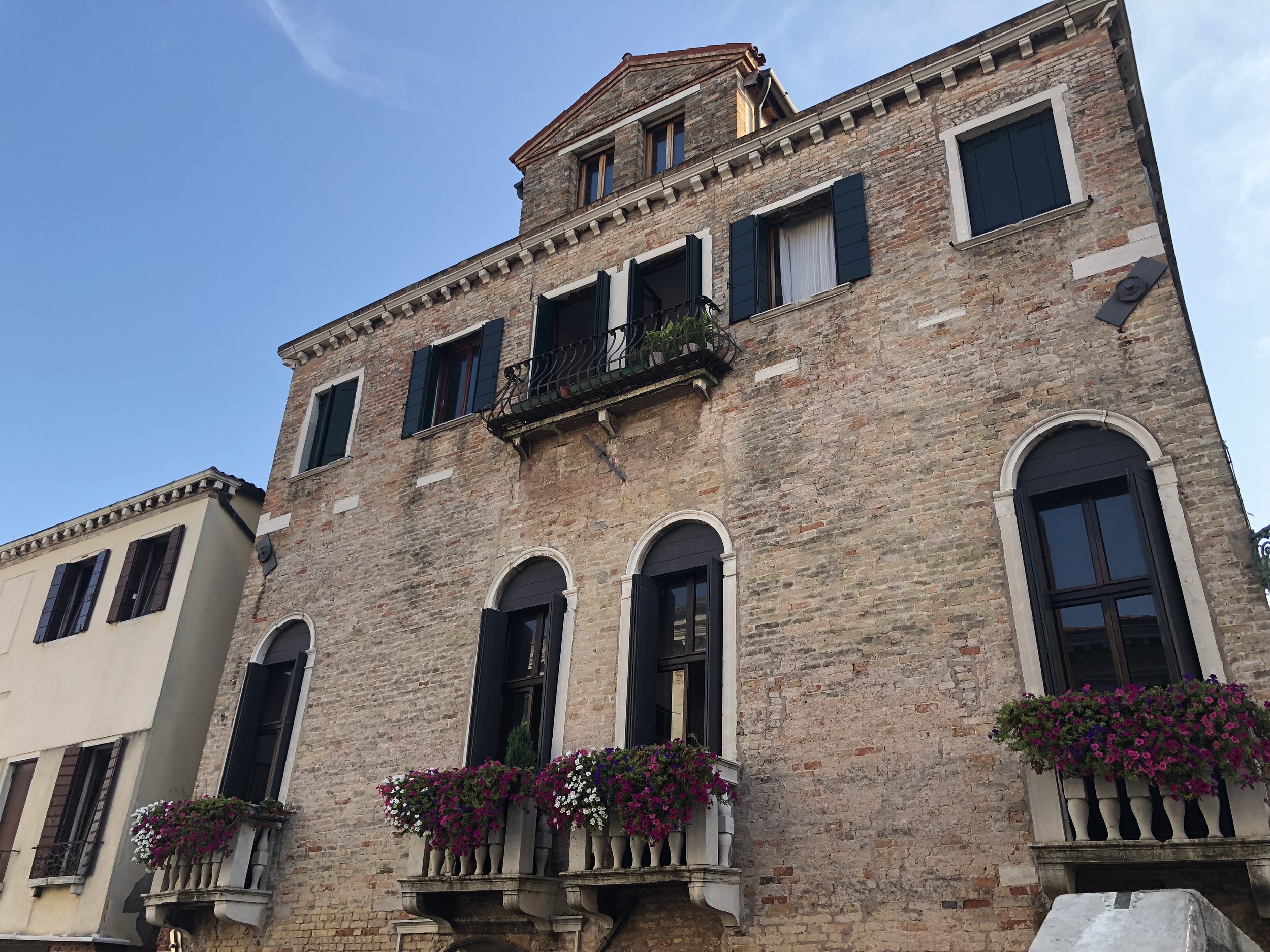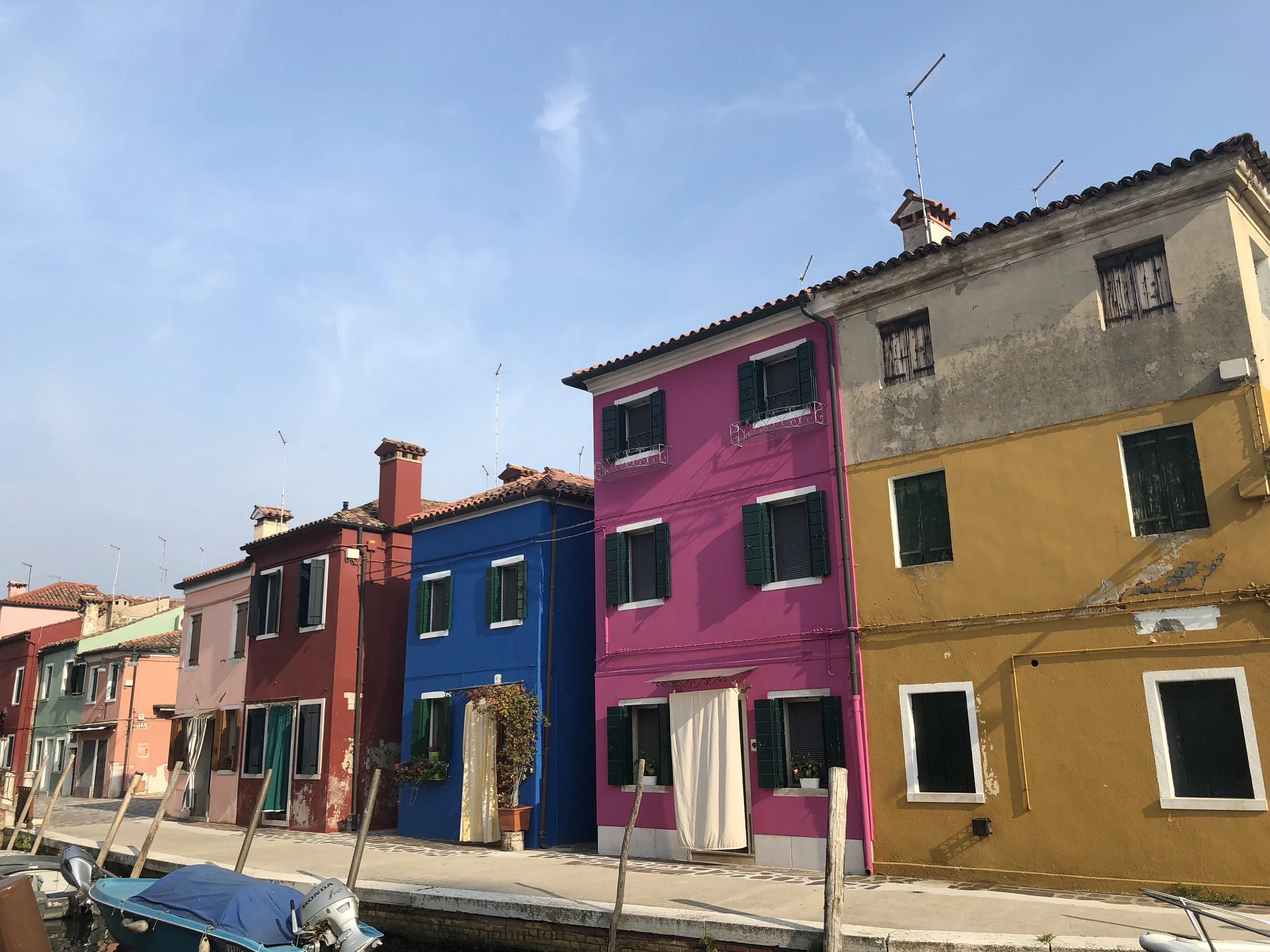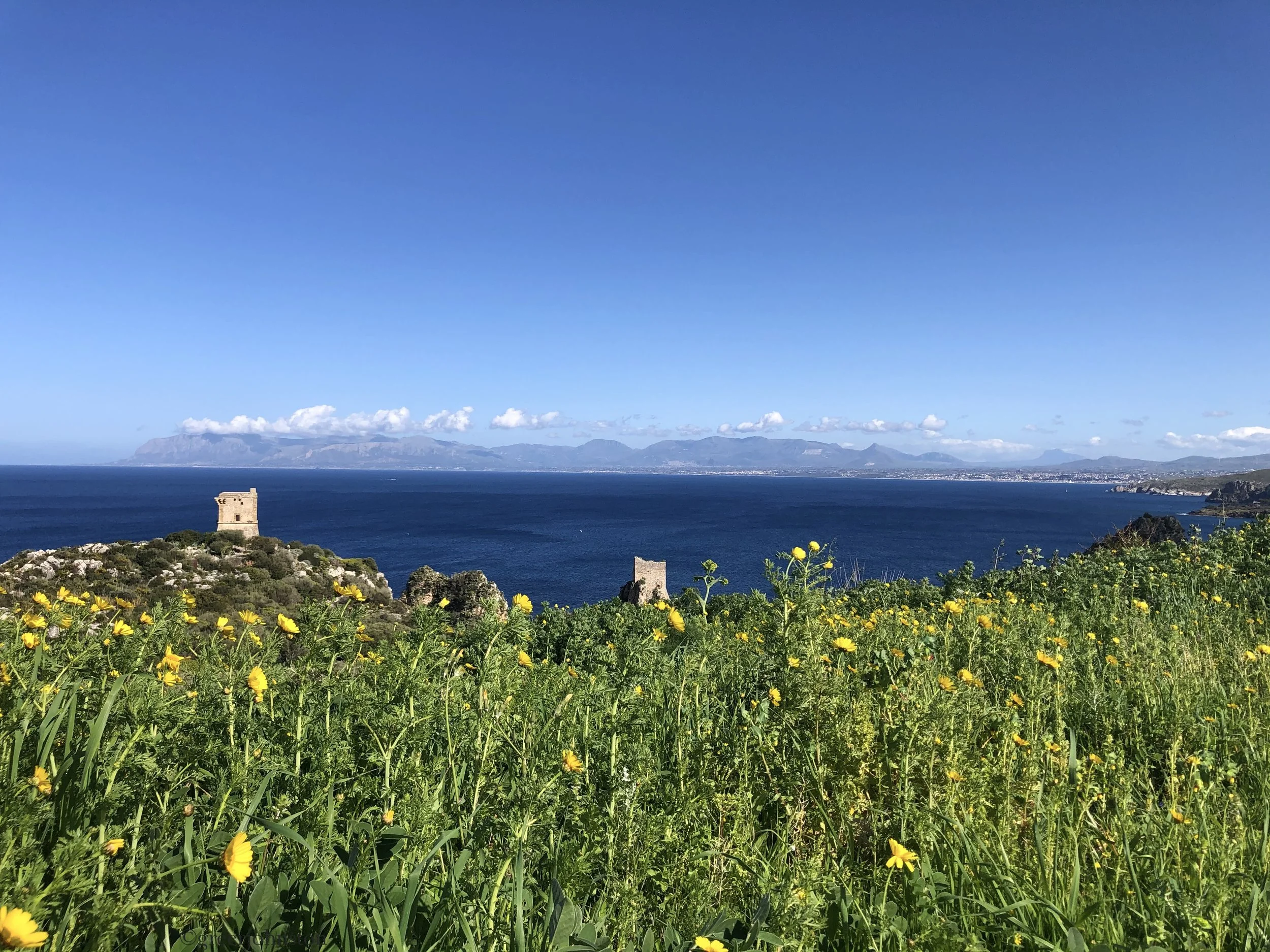Italian Citizenship by Descent
Hi everyone! Today, I’m going to be walking you through, step-by-step, the process of obtaining your Italian citizenship. So this is for you, if like me, your ancestors came from Italy, and you would like to get your Italian citizenship and return to live there one day.
I recently made a YouTube video basically explaining everything I have outlined below, but if you prefer to have all of the information in front of you, I have also collected it all here.
I wanted to make this post today because while getting your Italian citizenship should be a straightforward procedure, there is a lot of information to process, and it can become overwhelming. So today, I would like to break it down for you into easy, step-by-step pieces.
The topic of getting your Italian citizenship is something that is really important to me, because it is the reason that I have been able to come back and live in Italy after my great-grandparents emigrated from Sicily.
In Italy, there is a part of the law that says that people who are descended from Italian emigrants are eligible to claim Italian citizenship based on the fact that their heritage stems from there. The technical term for this law is “ius sanguinis” which literally means “right of blood.”
To do so should be a relatively straightforward process, however, it can get a little complex and complicated. So, if you are interested in pursuing Italian citizenship by descent, then I hope this video may be useful to you. I have divided the video into chapters so that you can easily find the information that you are looking for, since I know there is a lot to consider.
Disclaimer
First of all, I want to give a little disclaimer. I can only speak to my experience of the process of obtaining Italian citizenship by descent as a citizen of the United States. There may be different procedures for those of other nationalities, as well as things that have changed in the years since I myself went through the process. I am not a lawyer or an immigration professional, and this video serves only to recount my experience, and to be taken into consideration when doing your own research.
The best place to receive up-to-date and correct information would be your local Italian consulate. Their website should be your first point-of-reference even before watching this video. Every case for Italian citizenship by descent is unique based on the family composition, nationality of the applicant, and if significant family life events occurred in a third country, so it is important to consider the information I am sharing as a general base knowledge, but to examine your own case individually using the information provided by your consulate.
Why get your Italian citizenship?
Ok, so the first question you may be asking is, why get your Italian citizenship in the first place? I can think of a few reasons that were particularly important for me.
First, I would say is the emotional and sentimental connection that many of us Italian descendants feel towards our heritage and the homeland of our parents or grandparents. For me, I always felt connected to my Italian heritage, and I felt this even more so after I went to study in Rome for the first time. When I first left the airport, I felt so connected to this place, and I knew that I would want to come back and live here one day. Which brings me to my second reason. If you are thinking that you may want to come live in Italy in the future, having your Italian citizenship is one step you can take to make your journey here much easier.
My great-grandfather emigrated from Mazara del Vallo, a small city in Western Sicily known for its fishing
What to consider before beginning this process?
Now there are a few important things to consider when obtaining a second citizenship. The first is your own home country’s nationality laws. For example, in some countries it not possible to obtain a second citizenship without losing the one you currently have. The second is a military consideration. Before 1992, Italy had a mandatory military service for male citizens. Now while this has been abolished, that is not to say it may never come up for debate again. You should also consider tax law, and any implications that may have for you based on Italian law, the law of your first citizenship, and any third country in which you reside or have assets. The fourth thing to consider is the cost. The application for Italian citizenship itself is, at the moment, about 300 euro. And this is of course subject to change. Furthermore, there are many costs in obtaining original documents and having them certified and translated. Depending on how many documents your case will need, this can be a few hundred dollars easily, and potentially even more.
Furthermore, it is important to understand that this process will not happen overnight. It will likely take years. There are many steps, from research, to obtaining documents, having them certified and translated, and then making an appointment to submit the application, of which there could be a long wait. And once you do submit the application, it can take months to process, especially if you need to collect further documentation.
I am not telling you this to scare you, but only to prepare you to have realistic expectations. It is also important to understand all of requirements to obtain your Italian citizenship to make sure you meet them, and that you will be able to the find the documentation to prove so.
Today, Mazara del Vallo is known for the restoration of its traditional Kasbah district
One note – be patient and don’t get discouraged
Not only considering the length of time needed to gather all the documents, it can also be exhausting. Sending out applications for documents, waiting for them to arrive, the sheer amount of paperwork – it can be a lot to keep track of.
My best advice would be to try to stay as organized as possible. Keep a list of all the documents you are requesting. You can make columns to check off which tasks are in progress or have been completed: for example, requesting the documents, receiving the document, having the document certified, and having the document translated.
If you find yourself getting burnt out or too confused, you can always take a break. Keep all your documents organized in a safe place, and when you are ready to begin again you can pick up where you left off. Something to keep in mind, however, is that some consulates may have an expiry date for how long certified documents are valid for. I am not sure about this but it is something to look into.
Furthermore, keep copies of everything. Make a copy of every document you receive. This is also your first lesson of being an Italian citizen, because everyone in Italy has a ton of documents that you often need to pull out when you least expect it. You will have to submit all of the original copies to the consulate, so it is important that you have copies of all the documents to keep for your own records.
Now, it can also happen that you get to a point in your Italian citizenship journey where you feel you have reached a roadblock. For example, it may happen that you do not receive a document you requested. My advice to you would to be patient, and to not get discouraged. First, it is important to remember that sometimes things just get lost in the mail. Sometimes, documents are placed in the wrong file. Sometimes, you have to be persistent. You have to make the request for a second time, or try to reach another city office, or insist politely that someone look in the archives again.
If you are really committed to living in Italy, you can find other ways to do so. You can come to Italy to study, you can come to Italy to work. There is a process to obtain Italian citizenship after living here for a period of time, but again, it isn’t always necessary. If you only want to come for a period of time, you can arrange a study visa to study in an Italian university, or even stay for up to three months as a tourist, maybe during which you fall in love, in which case you can move here to live with your spouse.
You don’t need Italian citizenship to be able to visit Italy.
The important thing to remember is that this is not the only way to make your way to Italy. I really believe that if living in Italy is something that is important to you, you will be able to find a way.
Do some family research first
My great-grandfather from Sicily and me, decades apart, outside his home in Cleveland’s Little Italy
If you have decided that you would like to begin looking into obtaining your Italian citizenship, I would first advise you to do some family research. Actually, a lot of family research. You can begin by talking to your family, and identifying which of your family members was last born in Italy. If you have more than one relative, you can then decide which one you would like to prove your relationship to.
After gathering information from your family directly, I would start with using a genealogy website like Ancestry. Once I had built my family tree using the free version for example, and inputting as much information as I had, I then used the paid version for a few months to gather more specific information. In the paid version, you can sometimes actually see them documents themselves which come from government archives. This is so helpful because it makes tracking down the original copies of these documents much easier, especially when you have the certificate number, and the dates and the names of the people they concern.
What information am I looking for?
But what information are you looking for specifically? Basically, you are making a connection between yourself, and your last direct ascendant who was born in Italy.
If your paternal grandfather came from Italy, for example, you need your documents, the documents of your father and mother, and the documents of your father’s father and father’s mother.
As you can see, you basically need to complete the side of your family tree that leads back to your Italian ancestor.
I would start tracking down these documents on a genealogy site, but wait until the next step until you begin ordering them. Keep track of the names, dates, and state, county, or city office where you will eventually go to request the original copies.
Now, for each person in your direct line of ascent to your Italian ancestor, you will need their birth certificates, their marriage certificate if they were married, their divorce certificate if the couple divorced, and their death certificate if they passed away. You will also need birth and death certificates for the spouses of anyone in this direct line of ascent as well. For your relative who was born in Italy, the one through which you will make your application, you will also need their certificate of naturalization, or a statement from the government where they settled stating the lack thereof.
Check Eligibility
Once you have gathered all of the information connecting you to your Italian ancestor, you will need to check your eligibility. There are some key dates in Italian citizenship law that could affect your application.
Now, there is no limit on how many generations can have passed between you and your Italian ascendant. However, this rule naturally limits applications to ancestors who were actually citizens of the unified State of Italy. Because while Italy has a lot of history, it is actually a young country politically. Before March 17, 1861, the territory of today’s Italy was made up of kingdoms and duchies which no longer exist.
The one exception to this general rule is that they must have been Italian citizens at the time of the birth of the next descendent in line. What that means is basically that the “blood line” can’t have been broken. This is why the naturalization document is so important. Here is one example: if your grandfather emigrated from Italy, had one son in the United States, and two years later became a naturalized US citizen. Later that year, he also had a daughter. In Italian citizenship law, only his son would be able to claim citizenship by descent.
Now, there are a few more key dates to look out for when analyzing your family tree that dive deep into Italian citizenship law. I am just going to put the basics here, but I would encourage you, if you have any doubts, to consult with an immigration professional or attorney. Look at the specific dates that apply to your case.
The first is June 14, 1912. If you ancestor was naturalized before this date, you will not be able process your application. Furthermore, there was a law in place until August 16, 1992 that stated that Italian citizen who acquired another citizenship lost their Italian citizenship. And the last thing to be aware of is that female Italian ancestors would only be able to pass Italian citizenship on to their descendants after January 1, 1948.
Like I mentioned, these are only the basic ground rules of eligibility. There are some other rules specific to different regions of Italy. Again, if you find yourself in a grey area, I would consult a professional to make sure you don’t miss out an opportunity based on a doubt, because there are many complex rules to consider.
Order Italian documents
Once you have determined that you are eligible, it is time to begin ordering documents! I would begin with the Italian documents, since they are probably the most difficult to track down. You will have to look for the population registry office, called the Ufficio Anagrafe, in Italian, for the city or town in Italy where your ancestor was born and/or married. Look online to find their email address or real address, and they may have a form called “modulo per richiedere estratti di atti di stato civile” which means, form to request extracts of civil status records where you can select which records you are looking for, either “nascita, matrimonio, o morte” which is birth, marriage, or death. There is a multilingual option available, so you will be able to read the information they provide. In my experience requesting records from Italy has always been free.
Order naturalization documents
You will also need to request the naturalization certificate of your Italian ancestor. It is possible that your ancestor was never naturalized, however, you will need to provide an official certificate stating that no record of their naturalization was found.
My great-grandmother’s family came from Sant’Agata di Militello in the east of Sicily, another fishing village
Get local documents
Now for the next set of documents, you are going to need go back to your family tree which connects you to your ancestor from Italy. So for all of the people listed here you are going to need their birth certificates, their marriage certificates, and their death certificates, if they have passed away. Also their divorce certificates, if they were divorced. Remember this also includes your documents, as well of those of your spouse, and any minor children you have.
If you and any other family members over the age of 18, such as a sibling or an adult child, are both making the application, you should take advantage of making the requests for original documents to ask for original copies for however many of you may need them, as you will each be required to make your own personal petitions.
Apostille and Translation
Now the next section is where it can get a little tricky.
It was my understanding that every document that did not originate in Italy needed to have two additional steps in order to be certified for the consulate. The first is an apostille, and the second is a translation. However, it now seems that at least some consulates are no longer requiring one or both of these procedures for every document, but only for some. As I’ve said before, the best place to check for this information is on your consulate’s website.
But what are these procedures anyway? The first is an apostille, which is an internationally recognized certification of authenticity. In the United States, apostilles are issued by the Secretary of State’s office. Basically, once you have collected all the documents from various counties and cities in one state, you can mail them to the Secretary of State’s office, and you will most likely incur at least a small fee per document. They will return the documents to you, and each will have the apostille securely affixed to them. Just check ahead of time that there are no special requirements. For example, the New York Secretary of State’s office requires that documents from New York City have an extra letter attached to them that you have to request while you are ordering the original document.
Just in case you were wondering, original documents coming from Italy would not need an apostille, nor would the naturalization certificate if it was issued from a federal source.
Now, the apostille will not need to be translated, but the original document may, if it is in a language other than Italian. Again, I have seen that some consulates are no longer requiring every document to be translated, but instead only those related to the applicant. However, this is something that you will need to check carefully with the consulate through which you will make the petition.
To find a translator, I would refer to your local consulate, who will often provide a list of translators. I would definitely shop around and ask translators for a quote, as pricing can vary from person-to-person, and depending on how many documents you need, could become quite expensive.
Fill out forms and make your appointment
Once you have gathered all of your documents, it is time to submit them to your consulate. You will have to make an appointment to do so in person. There are also a few forms to fill out, basically just stating your information and that of your relatives who are included in the documents. You will also need your own national and state identity documents, as well as payment of the fee.
The view of the Aeolian Islands from Sant’Agata di Militello is incredibly beautiful, and I had one of the best swims of my life here!
Next steps
After months of waiting on your citizenship request one day will arrive the moment you’ve been waiting for. Likely a brief email, confirming your application has been processed successfully.
Congratulations! You are officially an Italian citizen! Years of hard work have paid off. I know this feeling so well. It feels like you are continuing the story of your family history, picking up where they left off. It took a lot of time and dedication to arrive at this moment. Enjoy it.
But your journey is just beginning.
The first thing you need to do, and likely the email will mention something about it as well, is to enroll in the AIRE, the Anagrafe degli italiani resident all’estero. Basically this the registry of Italian citizens residing abroad, and it is obligatory to enroll. You will be able to find more about this on your consulate’s website. It is important so that the government can communicate with its citizens all over the world. You have to keep the registry up to date with life events including marriage, divorce, or having a child. You also have to update them if you change your permanent residence. This way they will be able to send you your ballot when there is an election.
Finally, if you are planning on traveling to Italy or Europe in the future, I would make an appointment to receive your Italian passport. Sometimes there can be a long wait, and I think it is good to have on hand. You never know when you may have the opportunity to visit the home country, and after so much hard work and time spent dreaming of your return, I’m sure you can’t wait.
Me and my Italian passport, happily ever after
Closing notes
Making this video has really made me pause and reflect on how grateful I am to have gotten my Italian citizenship. Living in Italy is my dream, and this process allowed me follow that dream. It is truly something I do not take for granted. In the past years, I have built my life here, graduated from university here, and found a community of friends and family. I have been able to visit the towns where my ancestors lived, and I felt a deep connection to this land. I really feel like I am completing their story, and coming back to the place they once lived.
If you are an Italian citizen by descent, and are considering moving to Italy, then getting your citizenship is really just the first step. I’ll be covering what comes next in my next videos, so please subscribe to my YouTube channel so you can learn more about what to expect when you move to Italy. I hope this guide has been helpful to you in your Italian citizenship journey :) In bocca al lupo!
I hope this article was useful for you, and stay tuned for the next article in the Moving to Italy Series!
Note: The header image was taken at Sant’Agata di Militello, Sicily.













